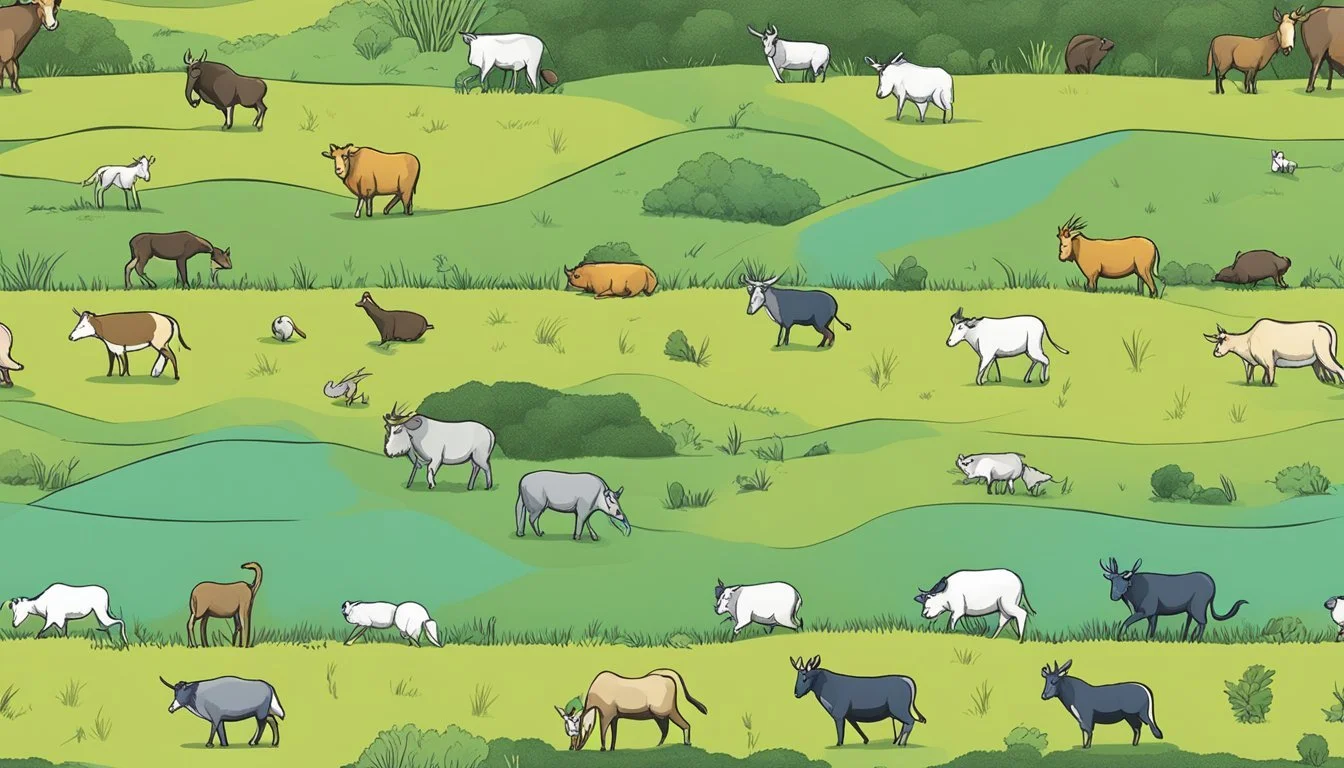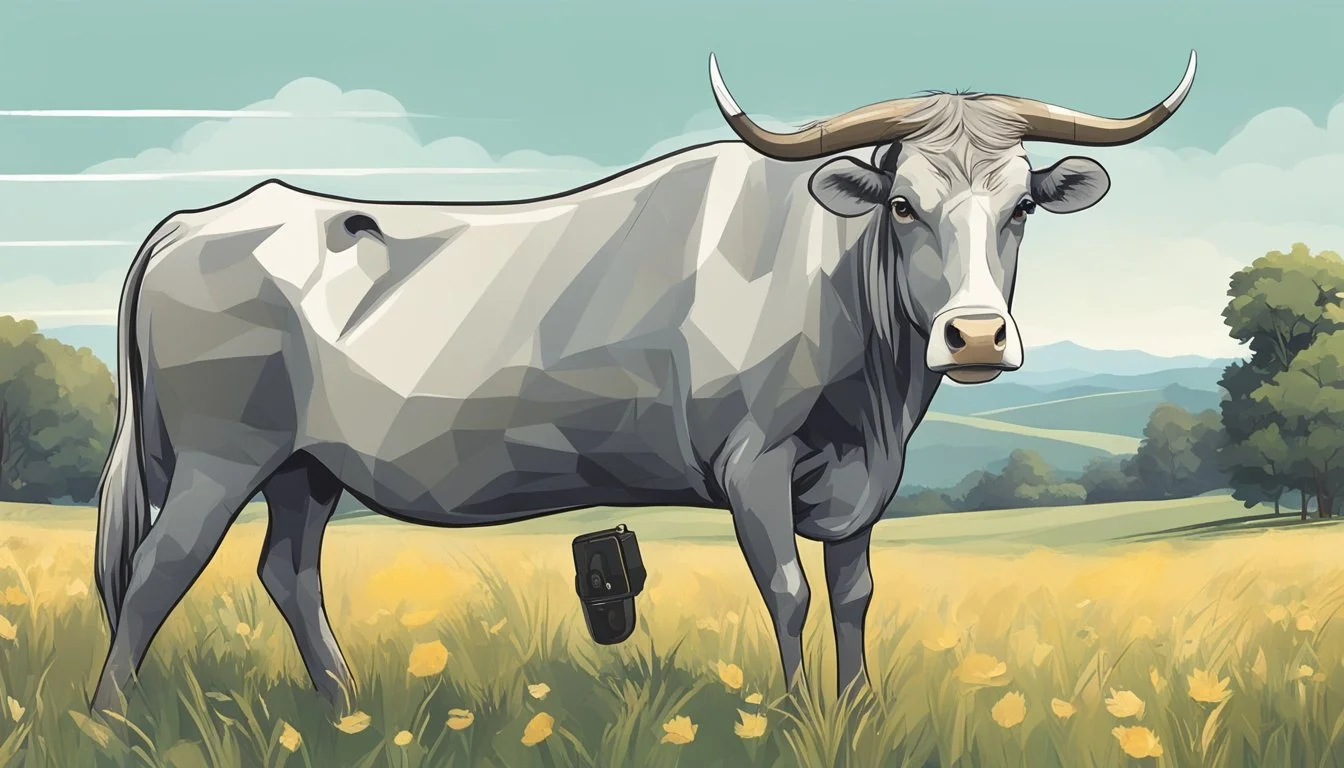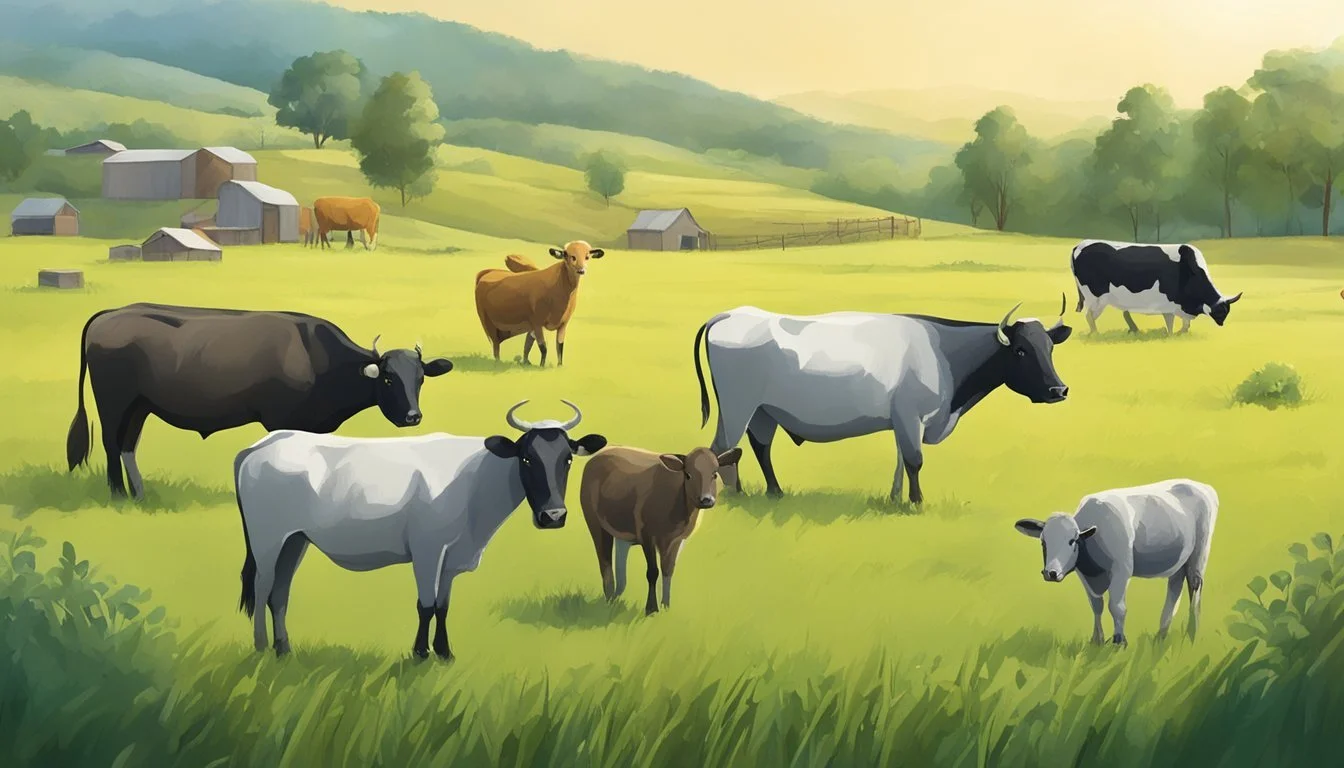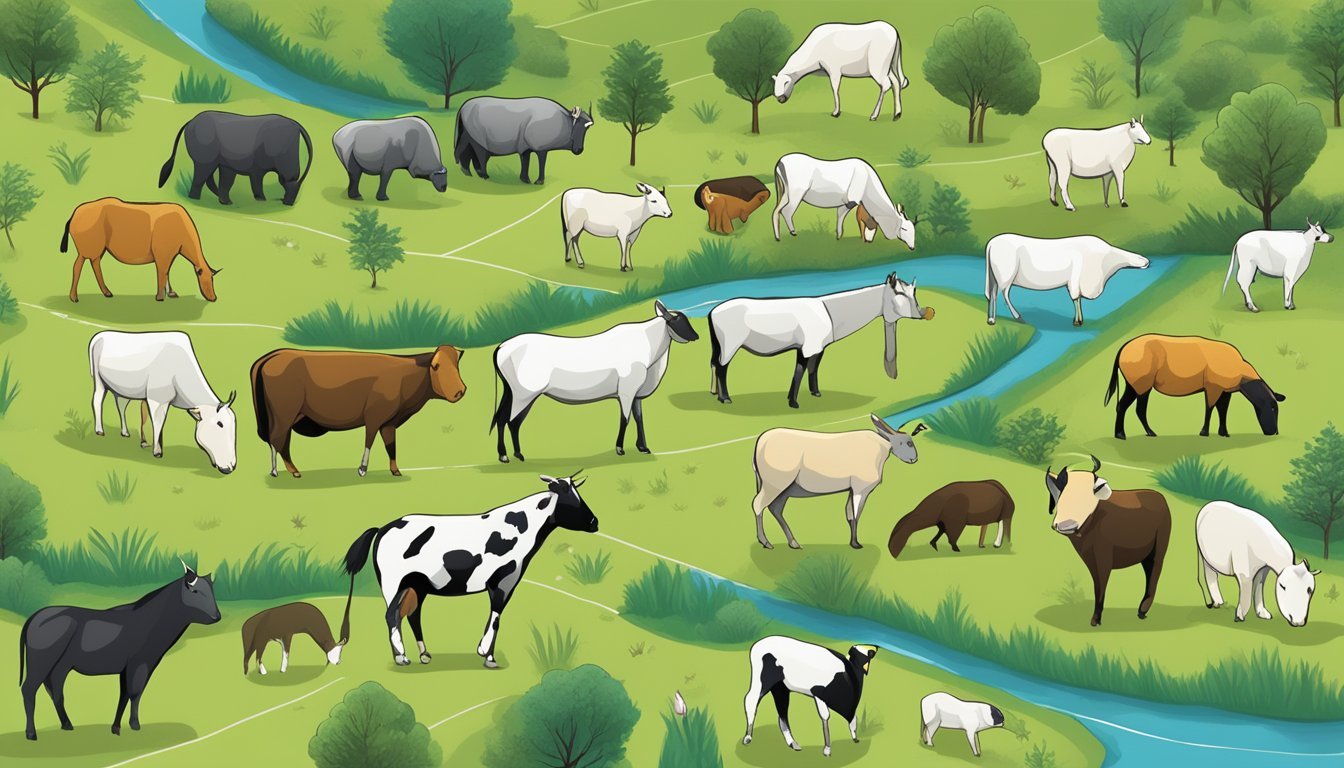The Ultimate Guide to Using an Animal GPS Tracker
Optimize Grazing and Monitor Livestock with Precision
In the evolving landscape of modern homesteading, tracking the grazing patterns and locations of livestock has transcended traditional methods. The integration of Animal GPS Trackers has introduced a new dimension in managing and understanding the behavioral patterns of cattle, sheep, and other grazing animals. These devices capture location data that is invaluable for efficient pasture management and ensuring the welfare of the animals. By equipping livestock with GPS collars, farmers and homesteaders can now obtain precise insights into their animals' movement patterns, ranging from where they prefer to graze to how much time they spend in various parts of the pasture.
The implementation of GPS tracking technology plays a pivotal role in enhancing livestock management. It enables real-time tracking and historical analysis of animal movements, which can assist in making informed decisions about rotational grazing, land use, and resource allocation. This fine-tuned approach to pasture utilization not only maximizes the productivity of the land but also promotes sustainable grazing practices that are vital to the long-term health of the ecosystem. Additionally, the collected data can be a critical component in designing site-specific management strategies that align with the unique requirements of each homestead.
By utilizing GPS trackers, homesteaders have the potential to revolutionize the way they manage their grazing land and livestock. They can actively monitor the well-being of their animals, ensure optimal use of their pastures, and mitigate environmental impacts. The insights gained from GPS data provide a comprehensive understanding of grazing behavior, enabling more precise and effective management of livestock and land resources.
Understanding GPS Tracking Technology
GPS tracking technology has revolutionized the way we monitor animal behavior, specifically grazing patterns and location tracking. The integration of advanced tools and communication networks has made it more accessible and accurate for homestead owners to study and manage their livestock.
Basics of Global Positioning System (GPS)
GPS is a satellite-based navigation system that provides location and time information under all weather conditions, anywhere on or near the Earth. The system operates by sending signals from GPS satellites in orbit to GPS receivers on the ground, which then calculate the exact location of the object being tracked.
Advancements in GPS Tags and Collars
In recent years, GPS tags and collars have evolved significantly. Today's devices are small enough to be used on a variety of animal sizes without impeding their movement or behavior. Advancements have led to reduced needs for recapture, as many modern tags automatically relay data to researchers remotely.
The Role of Satellite Telemetry in Animal Tracking
Satellite telemetry plays a crucial role in animal tracking by allowing data transmission from GPS devices to a satellite, which relays it back to a receiver on Earth. This method allows for tracking animals across vast and remote areas without the need for physical proximity.
Benefits of Using LoRa and GSM Networks
The use of LoRa (Long Range) and GSM (Global System for Mobile Communications) networks has enhanced the capabilities of GPS trackers. LoRa is valued for its long-range transmission and low power consumption, while GSM's widespread network ensures data connectivity even in varied terrains. This combination ensures that animals can be tracked over large distances, providing real-time information about their location and grazing habits.
The Science of Animal Movement
The pervasive use of GPS tracking technology has revolutionized understanding of how animals move across landscapes, providing detailed information on their grazing habits, migration, and behavior.
Deciphering Animal Tracks with GPS Data
GPS technology allows researchers to collect precise data on animal tracks, unveiling patterns in grazing and movement that were previously unobservable. GPS trackers log location data at regular intervals, which can then be analyzed to interpret an animal's path and behavior. This data is critical for managing homestead livestock, ensuring they are grazing optimally while also informing the homesteader about potential predatory threats or fencing issues.
Studying Migratory Patterns and Animal Behavior
Migration studies are pivotal in understanding the broader ecological impacts of animal movement. The integration of GPS data with ecological models helps researchers predict migratory routes and the conditions animals seek. This knowledge is vital not only for wildlife preservation but also for aligning homesteading practices with natural animal behavior, thus facilitating coexistence and minimizing human-animal conflict.
Ecological Insights from Location Data
Examining the location data gathered by GPS trackers can lead to valuable ecological insights. For instance, tracking movements can indicate the health of the habitat, as animals often move in response to changes in their environment. These insights enable homesteaders to adjust their land practices to support both their livestock and the native wildlife, fostering an environment where domestic and wild animals can thrive synergistically.
Practical Aspects of GPS Tracking Devices
When utilizing GPS tracking devices on a homestead to monitor grazing patterns and location, understanding the practicality of the technology is paramount. One must consider the type of device, its battery life, and maintenance, as well as integration capabilities with current technological systems.
Selecting the Right GPS Tracking Device
When selecting a GPS tracking device, homesteaders should assess the specific needs of their livestock and terrain. A robust device that withstands environmental challenges is essential. For example, those handling cattle in rugged terrain might opt for a device with a durable, weatherproof casing. Importantly, the device should provide accurate location data and be sized appropriately for the animal to ensure comfort and prevent loss of the device.
Understanding Battery Life and Maintenance
GPS tracking devices are powered by batteries whose life depends on operational settings. Devices with longer battery life require less frequent maintenance, an important factor for extensive grazing land. Homesteaders should look for devices that offer a balance between tracking frequency and battery longevity. A device that allows for adjustable update intervals can conserve battery life, prolonging periods between necessary maintenance.
Integrating GPS Devices with Internet of Things (IoT)
Integration of GPS devices with IoT enables homesteaders to receive real-time insights into the location and movement of their livestock. Such integration allows for the monitoring of grazing patterns through sensors and software platforms which process and visualize the data. By leveraging IoT, homesteaders can ensure that the GPS data contributes effectively to the management of their homestead, including resource allocation and response to any deviations in normal grazing behavior.
GPS Tracker Applications in Wildlife Management
GPS tracking has revolutionized the way wildlife populations are managed by providing precise data on animal movements and behaviors. This technology is essential in conservation efforts and livestock management, offering solutions to mitigate theft risks.
Monitoring Wildlife Populations
One utilizes GPS trackers to monitor wildlife populations by recording their locations over time. This allows conservationists to understand migration patterns, habitat usage, and population dynamics. These insights are critical for crafting effective conservation strategies and identifying areas vital for protection.
Migration Patterns: Track seasonal movements and identify critical corridors.
Habitat Usage: Determine preferred habitats and the impacts of environmental changes.
Population Dynamics: Monitor growth or decline in wildlife populations for species management.
Tracking Big Game Animals for Conservation
GPS tracking is invaluable for big game conservation efforts. It allows for the tracking of species like elk, deer, and predators, enhancing the understanding of their ecology. With this data, agencies can make informed decisions on preserving species and maintaining biodiversity.
Ecology Insight: Provides in-depth knowledge of feeding and breeding behaviors.
Anti-poaching Measures: Helps deter poaching by closely monitoring high-risk animals.
Policy Formulation: Assists in creating targeted conservation policies based on precise animal location patterns.
Managing Livestock and Reducing Theft Risks
For homesteaders and farmers, GPS trackers serve as a security mechanism. By equipping livestock with GPS devices, one can easily track their locations and receive alerts if they stray or are stolen, significantly reducing theft risk.
Location Alerts: Real-time updates if livestock exits predefined geofences.
Herd Management: Simplifies the monitoring of grazing patterns, ensuring optimal pasture use.
Theft Mitigation: Quick response to theft incidents due to immediate location tracking.
GPS tracker applications in wildlife management demonstrate immense potential for improving conservation efforts, securing big game animals, and enhancing livestock management. The technology stands as a cornerstone in merging wildlife conservation objectives with the pragmatic needs of society.
Case Studies and Practical Applications
The section delves into real-world scenarios where GPS trackers have provided valuable data on the grazing patterns and locations of various animals. Through a collection of case studies, the practicality and significance of using GPS technology in understanding and managing wildlife on a homestead become evident.
Insights from Tracking Deer and Elk
In North America, researchers have utilized GPS tracking to monitor the movements of deer and elk populations. The data has revealed critical grazing areas and migration patterns, aiding in habitat preservation efforts. Case studies show how GPS data has not only mapped these patterns but also informed responsible land development and conservation strategies, ensuring vital ecosystems remain intact for these species.
Ecological Balance and Predator-Prey Dynamics
GPS tracking plays a pivotal role in studying the ecological balance, particularly in observing predator-prey dynamics. For instance, GPS collars on elk have helped to track their spatial movements in relation to wolf populations, illustrating how these interactions affect their grazing behavior. This information is crucial for wildlife managers in implementing measures that maintain natural checks and balances within ecosystems.
GPS Technology in Fieldwork and Research
In the context of fieldwork and research, the application of GPS technology has transformed data collection methods. Real-time tracking provides researchers with detailed insights into the daily and seasonal movements of animals, offering a deeper understanding of their ecological roles. The deployment of GPS trackers has also enhanced the efficiency and accuracy of wildlife studies, reducing the potential for human error and disturbance to the animals observed.
Enhancing Animal Welfare and Farm Productivity
Utilizing GPS trackers on a homestead has a significant impact on animal welfare and farm productivity, by facilitating detailed health monitoring, grazing optimization, and effective predation prevention strategies.
Improving Livestock Health with GPS Monitoring
Implementing GPS tracking for livestock management enables farmers to monitor the health indicators of their animals more effectively. By tracking movement patterns, they can promptly identify when an animal is exhibiting signs of distress or abnormal behavior, such as reduced activity levels which may indicate illness. GPS monitoring also empowers farmers to ensure that livestock have access to fresh pastures, reducing the risk of overgrazing which can lead to soil depletion and poor animal health.
Optimizing Grazing Patterns
GPS trackers allow for precise mapping of grazing habits, leading to better pasture management. Recorded data on grazing patterns inform farmers about:
The areas most frequented by livestock.
Times spent in specific grazing zones.
With this information, they can manage rotational grazing schedules more efficiently, ensuring animals always have ample, nutritious feed. Optimal grazing supports both pasture sustainability and animal nutrition.
Role of GPS in Preventing Livestock Predation
GPS-enabled devices play a critical role in enhancing livestock safety. Real-time location tracking helps farmers monitor their animals and quickly respond to potential threats from predators. Additionally, the use of geofencing — virtual boundaries around the grazing area — alerts farmers instantly if an animal strays, potentially into hazardous areas or towards predators, which can vastly reduce the risk of predation events.
Challenges and Ethical Considerations
Implementing GPS tracking for monitoring grazing patterns on a homestead involves navigating through a series of challenges, particularly concerning the welfare of the animals and the handling of data. These issues are not just practical, but ethical as well, raising concerns about the proper use of technology in managing and studying wildlife.
Ethics in Wildlife GPS Tracking
When deploying GPS trackers on animals, one must assess the potential impact on the creature's well-being. It's essential that trackers are lightweight, typically less than 2 to 5% of the animal's body weight, to minimize any interference with their natural behaviors. Overburdening an animal with a heavy or cumbersome device can affect its ability to graze, migrate, and escape predators, which raises significant ethical questions about human intervention in nature for the sake of data collection.
Another consideration is the invasiveness of attaching the device. The method should prioritize the animal's safety, reducing stress and preventing injury. It's crucial that the individual attaching the device is trained and knowledgeable about the species to ensure that the process is as humane as possible.
Dealing with Data Privacy and Security Issues
The data collected by GPS trackers on homestead animals is sensitive, and it's imperative it remains secure to protect the location and details about the homestead and its practices. This is particularly relevant when the collected data includes patterns that could reveal the specifics of a homestead's operations, such as the locations of rare or valuable animals.
Data privacy protocols must be established, including encryption and access controls, to ensure that only authorized personnel can access the information. Furthermore, data should be used solely for the intended purpose without violating any privacy legislation that might be in place.
One must ensure that the gathered information is stored securely and that policies are clear on who can access the data and for what purpose. This prevents the misuse of sensitive geospatial information that could potentially lead to unwarranted surveillance or other ethical breaches.
Conclusions
Utilizing GPS trackers on homestead animals has provided significant insights into grazing patterns and location, enhancing the homesteader's ability to make informed decisions. The implementation of GPS technology leads to optimized pasture management and more efficient use of resources.
Future of Animal GPS Tracking Technologies
Developments in GPS tracking technology promise greater precision and durability of devices, with potential for smaller and more affordable GPS implants. Researchers anticipate advancements that will allow for real-time tracking with longer battery life and improved satellite connectivity. Such innovations will inevitably enhance the homesteader's ability to monitor and understand the nuanced behaviors of their grazing animals.
Decision-Making and Policy Development Based on GPS Data
The interpretation of GPS data plays a critical role in decision-making processes on the homestead. GPS data helps identify not only the location but also the movement patterns of animals, which can be translated into actionable strategies to improve grazing efficiency and land use. Additionally, the aggregated data from these devices can inform policy development at a community or regulatory level, potentially leading to better conservation practices and land management policies.









